Prophet Hosea's marriage to Gomer, a harlot, unfolds divine love and forgiveness, inviting a deeper exploration into its profound symbolism.
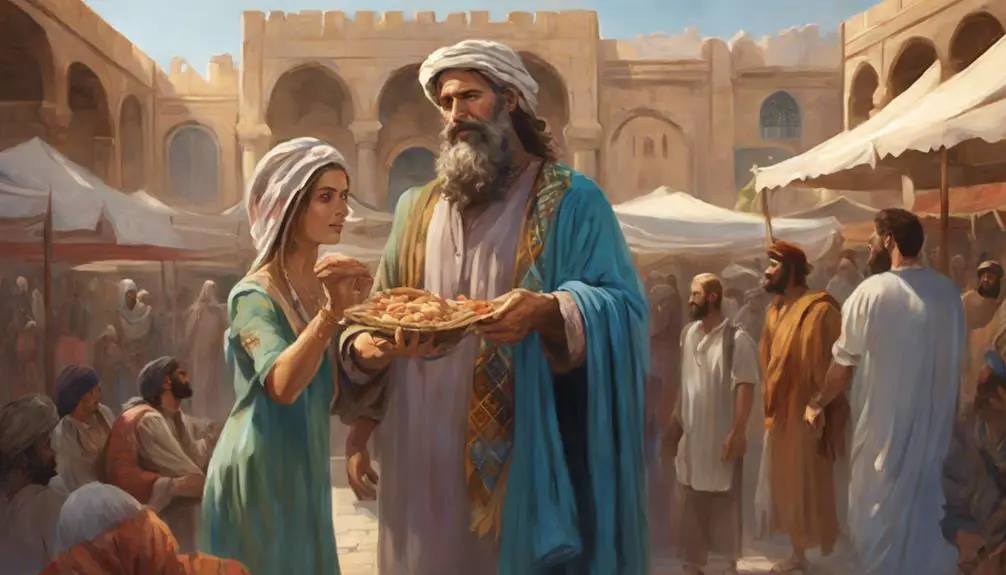
Who Married a Harlot in the Bible
In a tale where divine command meets human frailty, you'll find Hosea, a prophet, whose life became a living parable when he married Gomer, a woman known for her infidelity.
This unusual union wasn't born out of romantic love but was a directive from above, illustrating God's unwavering love for a wayward Israel.
As you explore their story, you'll uncover layers of meaning about forgiveness, loyalty, and the depth of unconditional love.
This narrative isn't just a historical account; it's a mirror reflecting timeless truths about human nature and divine compassion, compelling you to look closer into your own understanding of love and forgiveness.
Key Takeaways
- Hosea, a prophet in the Bible, married Gomer, a woman described as a harlot.
- Their marriage symbolized Israel's unfaithfulness to God through idolatry.
- The union served as a divine parable, showcasing God's unconditional love despite Israel's betrayal.
- Themes of infidelity, forgiveness, and divine love are central to Hosea's marriage to Gomer.
The Prophet Hosea's Command
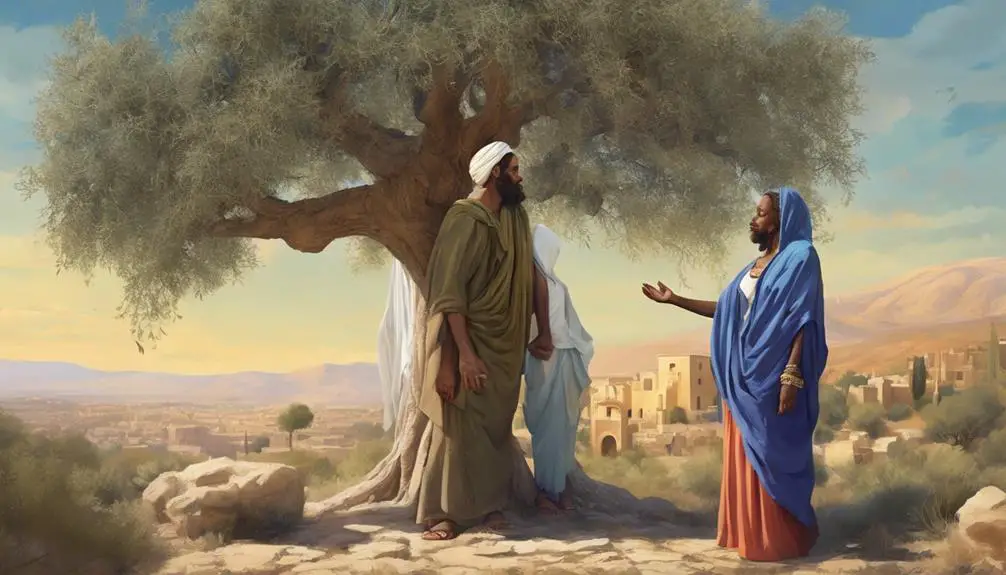
Instructed by God, the Prophet Hosea's command to marry a harlot symbolically represented Israel's infidelity. This directive, deeply rooted in prophetic symbolism, challenged prevailing cultural norms and expectations of matrimonial purity within the ancient Israelite society. You're invited to consider the profound implications of this act. It wasn't merely a personal ordeal for Hosea but a divine illustration of Israel's betrayal through idolatry and spiritual unfaithfulness.
The marriage, orchestrated by divine command, transcended conventional understandings of prophetic messaging. It vividly externalized the internal corruption and moral decay festering within Israel. This act of prophetic symbolism was a stark departure from the norm, serving as a visceral reminder of the covenantal relationship between God and Israel, now marred by infidelity.
Moreover, the command exposes the tension between divine expectations and cultural norms. By navigating this delicate terrain, Hosea's marriage becomes a mirror reflecting Israel's spiritual adultery, challenging observers to confront their own deviations from faithfulness to God. Through this lens, Hosea's life is transformed into a living parable, embodying the painful consequences of a nation's departure from its divine calling.
Gomer: The Harlot's Identity
Having explored the symbolic significance of Hosea's commanded marriage, we now turn our attention to Gomer, the woman at the heart of this narrative, whose life and identity as a harlot underpins the prophetic message conveyed. Gomer's lineage, though not extensively detailed in the biblical text, is crucial to understanding her societal role and the reactions she elicited.
As a harlot, Gomer's existence was marked by societal disdain, yet her selection by Hosea for marriage was divinely mandated, juxtaposing divine intention against human judgment. This contrast underlines the message of redemption and divine love that transcends societal boundaries and norms.
Societal reactions to Gomer's identity and her marriage to Hosea were likely mixed, with some viewing her as an embodiment of Israel's infidelity to God, while others may have seen in her story a possibility of redemption and return to divine favor. This duality in societal reactions highlights the complex nature of Gomer's identity, not just as a harlot, but as a central figure in a divine narrative designed to challenge, provoke, and ultimately inspire a reevaluation of one's relationship with the divine.
Marriage as a Divine Parable
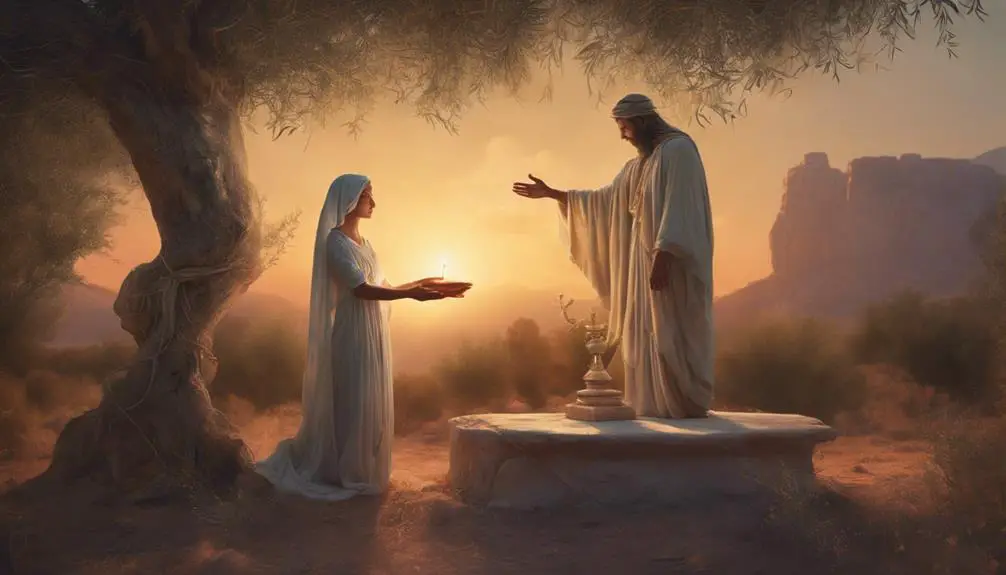
Although it may seem unconventional, Hosea's marriage to Gomer serves as a divine parable, symbolizing the complex relationship between God and the people of Israel. This historical event, chronicled in the Hebrew Bible, unfolds a narrative rich in divine symbolism and parabolic interpretations.
The marriage illustrates several key elements:
- Divine Love and Commitment: Just as Hosea's love for Gomer was unwavering, despite her unfaithfulness, this relationship mirrors God's unconditional love for the Israelites, regardless of their transgressions.
- Covenant Relationship: Hosea and Gomer's marriage covenant symbolizes the covenant between God and Israel, highlighting the expectations and responsibilities inherent in this divine relationship.
- The Consequences of Disobedience: The narrative subtly warns of the consequences that befall those who stray from their commitments, both in human relationships and in the covenant with God.
- Redemptive Possibilities: Without delving into specifics of infidelity and forgiveness, the overarching story hints at the redemptive possibilities within the covenant relationship, emphasizing God's willingness to restore and heal despite failures.
Through this marriage, the biblical text communicates profound truths about divine-human relationships, using personal and communal experiences to convey spiritual lessons.
Infidelity and Forgiveness
Moving beyond the surface of Hosea and Gomer's marriage, it's crucial to explore the themes of infidelity and forgiveness that lie at the heart of this story. This narrative isn't just a tale of personal betrayal and reconciliation; it delves deep into the complexities of trust rebuilding in the wake of unfaithfulness. You must understand that Hosea's decision to forgive Gomer isn't a simple act of personal magnanimity but a profound demonstration of divine forgiveness mirrored in human relationships.
The process of trust rebuilding depicted in this story is intricate. It's not merely about the betrayed party offering forgiveness but also about the betrayer recognizing their wrongdoing and genuinely striving to mend the broken trust. This dynamic interplay underscores the possibility of restoration even in relationships marred by deep wounds.
Moreover, the story doesn't shy away from the harsh reality of societal judgment. Gomer's actions and Hosea's decision to forgive are both subjected to the scrutiny and criticism of their community. This aspect of their story prompts you to reflect on how societal perceptions can influence, and at times complicate, the journey towards forgiveness and reconciliation.
Lessons in Unconditional Love
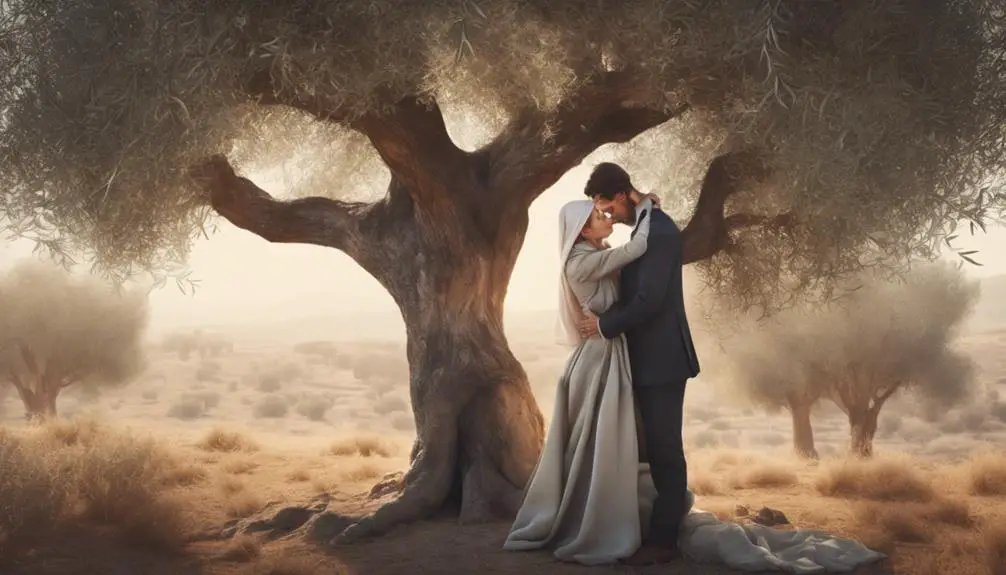
In the narrative of Hosea and Gomer, we're presented with a profound exploration of unconditional love, demonstrating its power to transcend personal hurt and societal judgment. This biblical story serves as a metaphor for divine love and personal transformation, offering you profound insights into the nature of forgiveness and redemption.
From this tale, you can glean several key lessons about unconditional love:
- It challenges societal norms: Hosea's love for Gomer defies the expectations of his community, illustrating how unconditional love often goes against the grain of societal judgments.
- It's a catalyst for personal transformation: Gomer's journey reflects how being the recipient of unconditional love can lead to profound personal change.
- It mirrors divine love: The relationship between Hosea and Gomer is symbolic of the relationship between the divine and humanity, showcasing the boundless nature of divine love.
- It requires selflessness: Unconditional love isn't about what you can get from the relationship but what you can give, embodying a selfless nature that seeks the best for the other, even at personal cost.
Analyzing Hosea's story teaches you that unconditional love isn't merely a feeling but an action that has the power to effect profound change, both personally and in the lives of others.
Frequently Asked Questions
How Did Society and Hosea's Contemporaries React to His Marriage to a Harlot?
You'd find society's reaction was a mix of cultural shock and religious debates. Hosea's marriage was unconventional, challenging societal norms and sparking controversy among his contemporaries.
It wasn't just about marrying a harlot; it was about questioning established religious and cultural beliefs. This bold move led to intense discussions, with some seeing it as a profound symbolic act, while others viewed it as a breach of societal and religious expectations.
Are There Other Instances in the Bible Where God Commands His Prophets to Take Unconventional Actions for Prophetic Symbolism?
Absolutely, the Bible is filled with instances of divine paradoxes where God commands prophets to demonstrate unconventional obedience.
For example, Isaiah walked naked for three years as a sign against Egypt and Ethiopia. This act, while shocking, highlights the extent prophets went to embody their messages.
Such narratives underscore the profound ways in which divine commands often challenge societal norms, inviting believers to reflect on the depths and complexities of faith and obedience.
How Does the Story of Hosea and Gomer Compare to Other Romantic Narratives in the Bible?
When analyzing biblical romantic narratives, Hosea and Gomer's story stands out for its deep exploration of divine love and cultural judgments. Unlike the conventional love stories, their relationship symbolizes God's unconditional love for His people, despite their unfaithfulness.
This narrative diverges from others by challenging societal norms and emphasizing forgiveness and redemption. It's a unique depiction of how divine love transcends human imperfections, setting a profound example of unconditional commitment.
What Were the Legal and Social Implications for Hosea and Gomer's Children, Given Their Mother's Profession?
Hosea and Gomer's children faced formidable challenges due to their mother's profession. Child naming served as symbolic statements of their social standing and prophetic messages, marking them with a legacy of lamentation.
Inheritance issues were inevitable, as societal stigma could hinder their rights and relationships. Analyzing their plight reveals the profound impact of parental roles and societal perceptions on children's identities and opportunities in ancient contexts.
How Has the Interpretation of Hosea's Marriage to Gomer Evolved in Modern Theological Studies and Feminist Perspectives?
In modern theological studies and feminist perspectives, you'll find that Hosea's marriage is often viewed as a divine metaphor, illustrating God's relationship with Israel.
Feminist critique, however, questions the implications of using a woman's infidelity as a metaphor for sin, arguing it perpetuates gender stereotypes and undermines women's agency.
This evolving interpretation highlights a shift towards examining biblical narratives through lenses that challenge traditional gender roles and theological assumptions.
Conclusion
In analyzing Hosea's marriage to Gomer, it's clear that this biblical narrative serves as a poignant divine parable. Their union, marked by infidelity and forgiveness, deeply embodies lessons in unconditional love.
Through their story, you're reminded that love isn't just a bed of roses but also requires navigating thorns. This tale, rich in symbolism, underscores the profound capacity for forgiveness and redemption, offering a timeless reflection on the complexities of love and the power of divine grace.

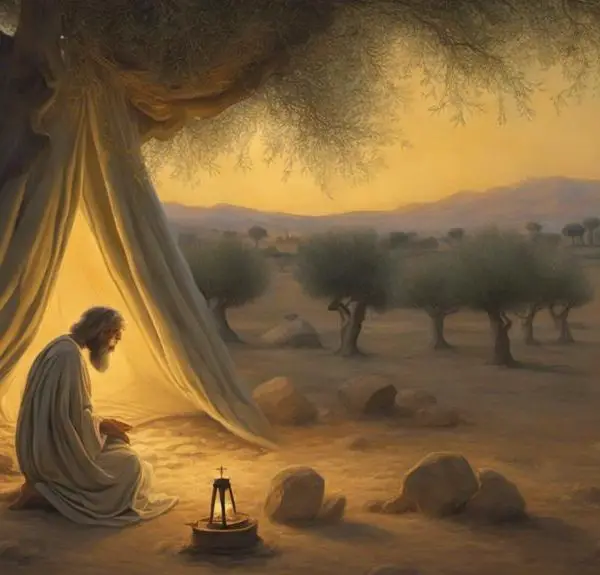
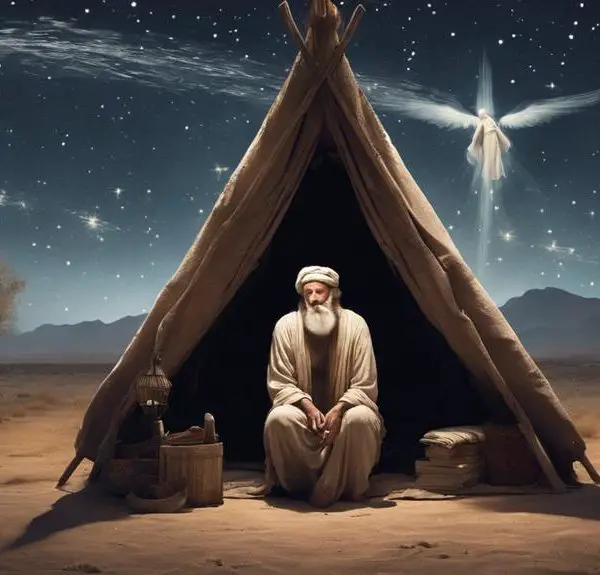
Sign up